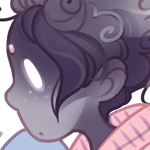Post by coffee on Oct 10, 2016 16:11:53 GMT -6
[attr="class","sitetemp1"]
[attr="class","sitetep"]Werewolves
[attr="class,"siteinfo"]
A werewolf, man-wolf, or lycanthrope, is a once previously thought folklorish human with the ability to transform into a wolf, or a therianthropic hybrid of a wolf-like creature. This is typically done either purposely, through being cursed, or bitten by another wolf. Rarely is this done through birth, though it is possible for naturally born werewolves to occur. Werewolves have been around for centuries as are stories about them, though some of the earliest cultivation of solid stories were done in the early medieval periods of Europe, which are related by a common development of a Christian interpretation of underlying European folklore.
Werewolves were believed to have traveled to the new world through early colonialism. The belief in werewolves was developed entirely in parallel to the belief in witches, and often time trials were held against accused werewolves in what is now Switzerland (especially the Valais and Vaud) in the early 15th century and spread throughout Europe in the 16th, peaking in the 17th and subsiding by the 18th century.
During this time most of the accusations that were thrown about were false, and real werewolves managed to live in relative peace and prosperity in either their own communities or alone during these times with little to no trouble on their persons. During the early period, accusations of lycanthropy (transformation into a wolf) were mixed with accusations of wolf-riding or wolf-charming, a practice mostly forgone by modern magicians.
In reality werewolves appear to be normal everyday humans. They live, they eat, and they survive the same as any modern person, but with a few differences. Werewolves are in fact restricted to the phases of the moon, and when the full moon comes a full transformation. For upward to a week leading the full moon comes symptoms such as moodiness, increased heart rates, hyperactivity and increased appetite. Wolf forms come in a variety of different shapes and sizes, such as the stereotypical man-wolf hybrid, or in the form of a simple giant wolf.
Werecreatures:
A much lesser known subspecies of the werewolf directly, though not entirely absent from folklore around the world, there are other types of werecreatures. Every animal you can think of under the sun can technically be a werecreature, you just need the right curse for it. Unable to be born into the world through regular means unlike werewolves, most werecreatures need curses or rituals in order to become one, which spells are circulating through the web at an alarming rate, though most rituals are bogus. The best way to become a werecreature is through an old witch or magician, or some kind of shaman. Werecreatures are bound to the same physical laws as werewolves, being forced to transform under the full moon with a range of similar side effects.
A werewolf, man-wolf, or lycanthrope, is a once previously thought folklorish human with the ability to transform into a wolf, or a therianthropic hybrid of a wolf-like creature. This is typically done either purposely, through being cursed, or bitten by another wolf. Rarely is this done through birth, though it is possible for naturally born werewolves to occur. Werewolves have been around for centuries as are stories about them, though some of the earliest cultivation of solid stories were done in the early medieval periods of Europe, which are related by a common development of a Christian interpretation of underlying European folklore.
Werewolves were believed to have traveled to the new world through early colonialism. The belief in werewolves was developed entirely in parallel to the belief in witches, and often time trials were held against accused werewolves in what is now Switzerland (especially the Valais and Vaud) in the early 15th century and spread throughout Europe in the 16th, peaking in the 17th and subsiding by the 18th century.
During this time most of the accusations that were thrown about were false, and real werewolves managed to live in relative peace and prosperity in either their own communities or alone during these times with little to no trouble on their persons. During the early period, accusations of lycanthropy (transformation into a wolf) were mixed with accusations of wolf-riding or wolf-charming, a practice mostly forgone by modern magicians.
In reality werewolves appear to be normal everyday humans. They live, they eat, and they survive the same as any modern person, but with a few differences. Werewolves are in fact restricted to the phases of the moon, and when the full moon comes a full transformation. For upward to a week leading the full moon comes symptoms such as moodiness, increased heart rates, hyperactivity and increased appetite. Wolf forms come in a variety of different shapes and sizes, such as the stereotypical man-wolf hybrid, or in the form of a simple giant wolf.
[attr="class","tempadd"]attributes
- Sharp Claws
- Sharp Teeth
- Enhanced eyesight
- Enhanced sense of smell
- Enhanced endurance
- A higher pain tolerance
- Toughened skin
- Sharp hearing
- A need for rare/raw meat as a dietary staple
- A strong pack mentality
[attr="class","tempadd"]powers
- Transformation: Werecreatures can actually retain the ability to transform into their bestial counterparts at will. Though forced to transform on the full moon its not always the case, and many enjoy the freedoms that come with transforming into their bestial forms and the perks that come with it.
- Enhanced Senses: Every werecreature has enhanced senses. The basic five as well as a sixth, intuition. Sight, smell, hearing, taste and touch are all heightened to incredible lengths after the first few initial transformations, and then intuition is useful for bad situations where werecreatures can generally get a good feel for situations.
- Toxic bite: In the fangs of every werewolf is a venom, that when enters the bloodstream of another person, can infect them. Very painful and sickening to deal with, humans will suffer fever, hallucinations, vomiting and crippling pain before transforming.
- Telepathy: Though not in the traditional sense those werecreatures with a "pack mentality" can communicate with others in their pack. Though words are not uncommon mostly emotions and images are portrayed through their messages.
- Quick healing: All werecreatures have the ability to heal three times faster than any typical human. When injured it only takes a few hours for a flesh wound to heal as opposed to days, and weeks where a broken bone would take months. Though this ability is dampened when seriously ill or otherwise the body weakened by outside means, it's useful in a pinch.
[attr="class","tempadd"]weaknesses
- Pure silver: Silver, just like in the myths and folktales, is a sure way to kill a werewolf. The metal is poison in their veins and can thoroughly destroy them. It's believed that those who wear silver amulets can not transform, and it does in fact burn their skin to touch the metal.
- Mercury: Much like silver, mercury (aka quicksilver) is also poisonous to werewolves. This toxic metal can be used in the forms of tools and weapons, as well as a pure injection to destroy a werewolf from the inside out, eating at their cells.
- Wolfsbane: A plant that supposedly sprouted from weeds watered by the drool of Cerberus while he was brought out of Hades by Heracles, wolfsbane is an intoxicating but deadly plant to werewolves. When ingested it causes a breakdown of the internal organs as well as internal bleeding and eventual hemorrhaging.
[attr="class","tempadd"]subspecies
Werecreatures:
A much lesser known subspecies of the werewolf directly, though not entirely absent from folklore around the world, there are other types of werecreatures. Every animal you can think of under the sun can technically be a werecreature, you just need the right curse for it. Unable to be born into the world through regular means unlike werewolves, most werecreatures need curses or rituals in order to become one, which spells are circulating through the web at an alarming rate, though most rituals are bogus. The best way to become a werecreature is through an old witch or magician, or some kind of shaman. Werecreatures are bound to the same physical laws as werewolves, being forced to transform under the full moon with a range of similar side effects.
[attr="class","tempadd"]created by staff





